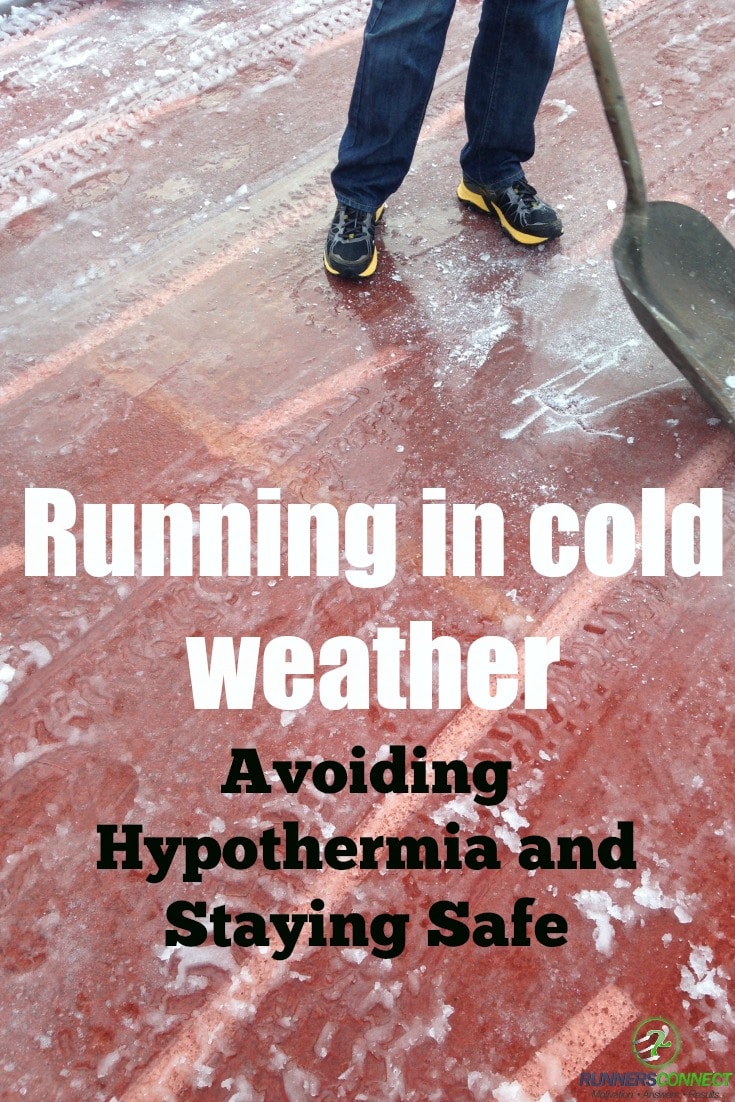 As winter closes in on runners in many areas of the country, it is worth taking a look at how to manage training in cold temperatures. In some ways, cold weather is not as restricting as hot weather: you can always put more clothes on to stay warm. However, colder temperatures are associated with a number of risks for runners, and chief among these is hypothermia.
As winter closes in on runners in many areas of the country, it is worth taking a look at how to manage training in cold temperatures. In some ways, cold weather is not as restricting as hot weather: you can always put more clothes on to stay warm. However, colder temperatures are associated with a number of risks for runners, and chief among these is hypothermia.
By looking to the scientific and medical literature, we can get a better idea of who needs to be worried about hypothermia and when.
Research on how to stay warm when running in the cold
Though most published literature on adverse weather conditions and running focuses on hot weather and the problems it can cause—heat exhaustion, dehydration, and significantly impaired performance—some authors have nevertheless examined distance running and racing in the cold.
In a 1984 brief to the British Journal of Sports Medicine, A. M. W. Porter points out that heat regulation during exercise is a delicate balance that can be upset by any number of factors. In addition to the obvious ones, like the ambient temperature, wind speed, and any precipitation, Porter notes that running speed, wind direction, clothing choices, body size, race strategy, and fitness can all have a significant impact on your ability to stay warm while running.
Running into the wind
While it is true that the faster you run, the more energy you burn and thus the more heat you gain, you also move more cold air across your body.
This means that, even in still air, you will always be running into an equivalent “headwind” equal to your running speed.
This effect is amplified when you run into the wind, and reduced when you are running with it.
Because of the cooling effect of the wind, many runners and coaches, including Jack Daniels, author of Daniels’ Running Formula, advocate running into the wind for the first part of your run or workout, then turning around to return with the wind. This way, you don’t work up a sweat running easily with the wind, only to turn around and face a brisk headwind that will quickly sap away all your warmth.
Wearing proper running attire
Sweat, or indeed any form of moisture, will increase heat loss during exercise in the cold.
High-tech clothing, which can wick sweat away from your skin during a run, will obviously help, but a wet shirt will still cool you off faster than if it was dry.
For this reason, the American College of Sports Medicine’s position stand on heat and cold illness during running recommends wearing several light layers of clothing instead of one or two thick layers so you can calibrate your dress to better match the temperature outside. Overdressing can lead to trouble, especially when it is windy.
Body size and hypothermia
As pointed out by Porter and extrapolated on in another 1984 paper by R.J. Maughan, body size has a significant and sometimes contradictory effect on heat regulation:
- While larger athletes tend to run slower, they also have less skin exposed to the cold in relation to their body mass, meaning they retain heat much better.
- In contrast, very lean runners have the potential to lose a lot of heat because their bodies do a comparatively poor job keeping in heat; the same is true of younger runners.
- Porter points out that tall runners are also at a higher risk of suffering from hypothermia, because tall runners, with their larger lungs, lose more warmth both via the evaporation of moisture and the exchange of hot and cold air inside their lungs.
The affect of race strategy on hypothermia
A 1985 study, also by R.J. Maughan, demonstrated the effects of race strategy on hypothermia during cold-weather racing. At the 1982 Aberdeen marathon in Scotland, 59 volunteers had their body temperature measured immediately after finishing the race. The weather was cool and blustery, with a 50-degree air temperature and winds of 16 miles per hour.
Though this is relatively modest weather by most runners’ standards, there were nevertheless several runners with temperatures significantly below the normal range.
In his analysis of the data, Maughan showed that overall race time was not correlated with body temperature, but the time the runners took for the second half of the race had a significant influence on their body temperature at the finish.
Those athletes who had started too fast or whose training was insufficient for them to maintain their speed for the entire race were significantly colder at the finish.
Conclusion
Though we usually associate hypothermia with extremely cold and windy weather that’s found most often in the upper Midwest, Maughan, Porter, and other researchers have shown that hypothermia can also occur in milder weather, especially when it’s windy and wet.
A 2007 study by William Roberts showed that many more marathon runners need attention at medical tents when the weather is both cold and wet—cold but dry weather merely increases the drop-out rate along the course. And Timothy Noakes describes several road races in only mildly cool weather where runners (even fairly fast ones) fell victim to hypothermia because of high winds, precipitation, or being underdressed.
As we’ve seen above, your risk of developing hypothermia while running is increased when and if:
- It is cold, windy, and wet
- You are young, tall, thin
- You run at a slow pace—especially if you started your run, workout, or race running faster.
Taking these factors into consideration can ward off hypothermia and discomfort during runs in cold weather.
- Wearing several layers of clothes, preferably “technical fibers” designed for exercise, will allow you to more easily regulate your temperature, as will taking the wind direction into account when beginning your run.
- When in doubt, it never hurts to take a hat and gloves along with you, as you can easily tuck them into your waistband if they aren’t needed.
Fortunately, cold weather is still easier to work around than hot weather: even on days with very bad weather, the number of runners admitted to medical tents at marathons for cold-related illness is much lower than the number who suffer from heat illness on hot days. And, as many elite runners who live and train in cold-weather locations demonstrate, winter weather doesn’t need to prevent you from getting your training in.








